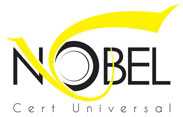Hazard analysis and critical control points or HACCP (/ˈhæsʌp/) is a systematic preventive approach to food safety from biological, chemical, and physical hazards in production processes that can cause the finished product to be unsafe, and designs measurements to reduce these risks to a safe level. In this manner, HACCP attempts to avoid hazards rather than attempting to inspect finished products for the effects of those hazards. The HACCP system can be used at all stages of a food chain, from food production and preparation processes including packaging, distribution, etc. The Food and Drug Administration (FDA) and the United States Department of Agriculture(USDA) require mandatory HACCP programs for juice and meat as an effective approach to food safety and protecting public health. Meat HACCP systems are regulated by the USDA, while seafood and juice are regulated by the FDA. All other food companies in the United States that are required to register with the FDA under the Public Health Security and Bioterrorism Preparedness and Response Act of 2002, as well as firms outside the US that export food to the US, are transitioning to mandatory hazard analysis and risk-based preventive controls (HARPC) plans.
HACCP is believed to stem from a production process monitoring used during World War II because traditional “end of the pipe” testing on artillery shell’s firing mechanisms could not be performed, and a large percentage of the artillery shells made at the time were either duds or misfiring. HACCP itself was conceived in the 1960s when the US National Aeronautics and Space Administration (NASA) asked Pillsbury to design and manufacture the first foods for space flights. Since then, HACCP has been recognized internationally as a logical tool for adapting traditional inspection methods to a modern, science-based, food safety system. Based on risk-assessment, HACCP plans allow both industry and government to allocate their resources efficiently in establishing and auditing safe food production practices. In 1994, the organization of International HACCP Alliance was established initially for the US meat and poultry industries to assist them with implementing HACCP and now its membership has been spread over other professional/industrial areas.
Hence, HACCP has been increasingly applied to industries other than food, such as cosmetics and pharmaceuticals. This method, which in effect seeks to plan out unsafe practices based on science, differs from traditional “produce and sort” quality control methods that do nothing to prevent hazards from occurring and must identify them at the end of the process. HACCP is focused only on the health safety issues of a product and not the quality of the product, yet HACCP principles are the basis of most food quality and safety assurance systems. In the United States, HACCP compliance is regulated by 21 CFR part 120 and 123. Similarly, FAO/WHO published a guideline for all governments to handle the issue in small and less developed food businesses.
HACCP benefits:
LRQA is accredited by the Dutch Council for Accreditation. Our HACCP services deliver against the embedded HACCP principles developed by Codex Alimentarius of the World Health Organisation to ensure your legal compliance and an effective food safety system.
- Our understanding of the complexities of HACCP allows us to deliver tangible benefits to our clients through a structured project management approach.
- We know that good communication is pivotal in delivering transparency through every step of the HACCP process. We work with our clients and governing organisations and set clear expectations to all parties on deliverables.
- Our staged approach ensures your certification process is cost-effective with minimal disruption and completed within critical timelines.

